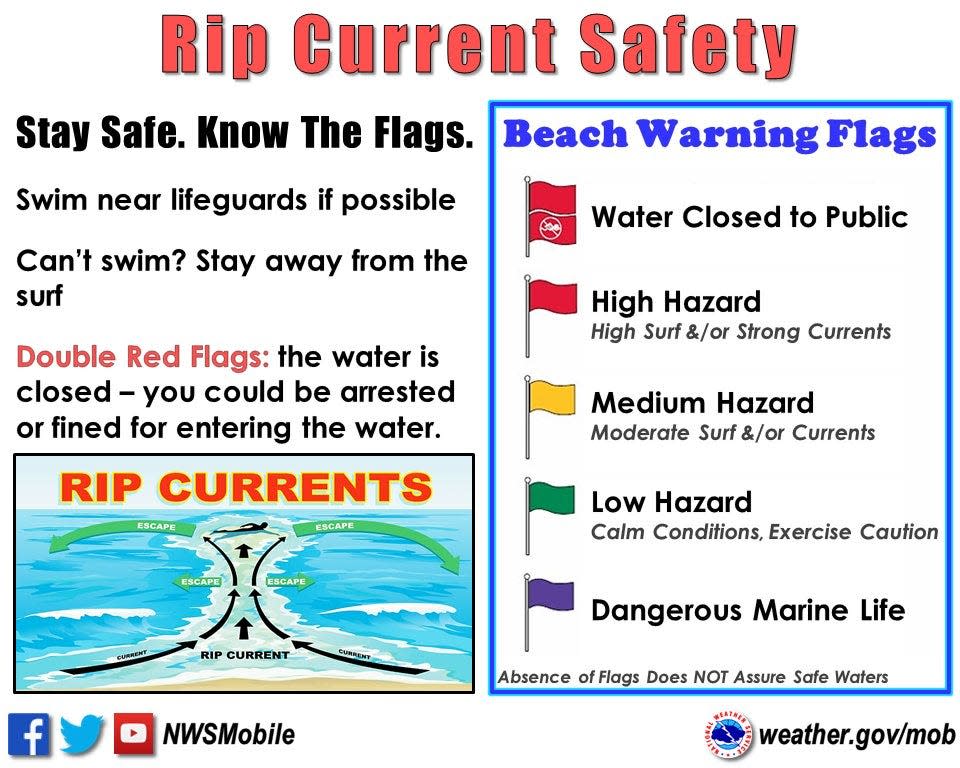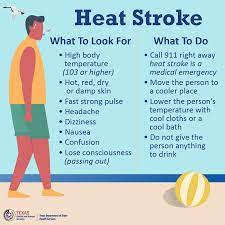A heat warning is in effect for most of Florida today, with some parts of the Sunshine State seeing heat indexes as high as 112.
If you want to avoid the heat during the long weekend by going to the beach, be careful.
Dangerous rip currents and life-threatening waves are expected along the entire Gulf Coast due to waves from Hurricane Beryl.
➤ Follow Hurricane Beryl
Here’s what you need to know about the latest advice and how to stay safe.
Warnings and alerts issued across Florida
Florida Heat Index and Temperature Map
Expect dangerous rip currents along Florida’s west coast and Panhandle
A rip current is a powerful, narrow stream of water that flows off the beach. According to NOAA, it can flow at speeds of up to 8 feet per second.
Do not attempt to swim directly back to shore to escape a rip current.
Rip currents are the leading cause of weather-related deaths along the northern Gulf Coast, with 213 deaths expected in 2023, according to the National Weather Service in Mobile.
Swim parallel to the shore until you are out of the rip current and then swim back to land.
What do beach warning flags mean?

What is a heat warning?
A heat warning is one of several types of health warnings issued by the National Weather Service. A heat warning is issued within 12 hours of the onset of extremely dangerous heat conditions.
In Florida, with the exception of Miami-Dade County, National Weather Services offices in the state would issue a heat warning if the heat index is expected to reach 108 to 112 degrees. The National Weather Service Miami said Miami/Dade County wanted a lower threshold for a warning for its population, which was set at 105 degrees.
If a heat warning is issued, take precautions to prevent heat illness. If you do not take precautions, you could become seriously ill or even die.
What other types of heat warnings does NWS issue?
The National Weather Service issues several types of heat-related warnings, including:
-
Excessive heat warning: An extreme heat warning is issued within 12 hours of the onset of extremely dangerous heat conditions. Failure to take immediate precautions when conditions are extreme can result in serious illness or death.
-
Warning of excessive heat: Heat warnings are issued when conditions are favorable for an extreme heat event in the next 24 to 72 hours. A warning is used when the risk of a heat wave has increased, but its occurrence and timing are still uncertain.
Heat Stroke vs. Heat Exhaustion: How to Tell the Difference


If your body can’t cool itself down, your body temperature rises. If it gets too high, it can be life-threatening.
The Centers for Disease Control and Prevention has compiled a list of warning signs and symptoms of heat-related illness and what you should do.
Heat cramps
Heat cramps can be the first sign of a heat-related illness and can lead to heat exhaustion or stroke.
-
Symptoms: Painful muscle cramps and spasms, usually in the legs and abdomen, and profuse sweating.
-
FIRST AID: Apply firm pressure to cramped muscles or massage gently to relieve spasms. Give sips of water unless the person complains of nausea, then stop giving water.
-
Seek immediate medical attention if cramps last more than 1 hour.
Overheating
-
Symptoms: Heavy sweating, weakness or tiredness, cold, pale, clammy skin; rapid, weak pulse, muscle cramps, dizziness, nausea or vomiting, headache, fainting,
-
FIRST AID: Move the person to a cooler environment, preferably a well-air-conditioned room. Loosen clothing. Put on cool, wet cloths or have the person sit in a cool bath. Give him or her sips of water. If the person vomits more than once, seek immediate medical attention if the person vomits, the symptoms worsen, or last longer than 1 hour.
Sunstroke


-
Symptoms: Throbbing headache, confusion, nausea, dizziness, body temperature above 39°C, warm, red, dry or moist skin, fast and strong pulse, fainting, loss of consciousness.
-
FIRST AID: Call 911 or take victim to hospital immediately. Heat stroke is a serious medical emergency. Delay can be fatal.
-
Move the victim to a cooler, preferably air-conditioned, environment. Reduce body temperature with cool cloths or a bath. Use a fan if heat index temperatures are below the high 90s. A fan can make you hotter in higher temperatures.
-
Do not give moisture.
This article originally appeared on Treasure Coast Newspapers: Florida weather, heat index. Dangerous temperatures







